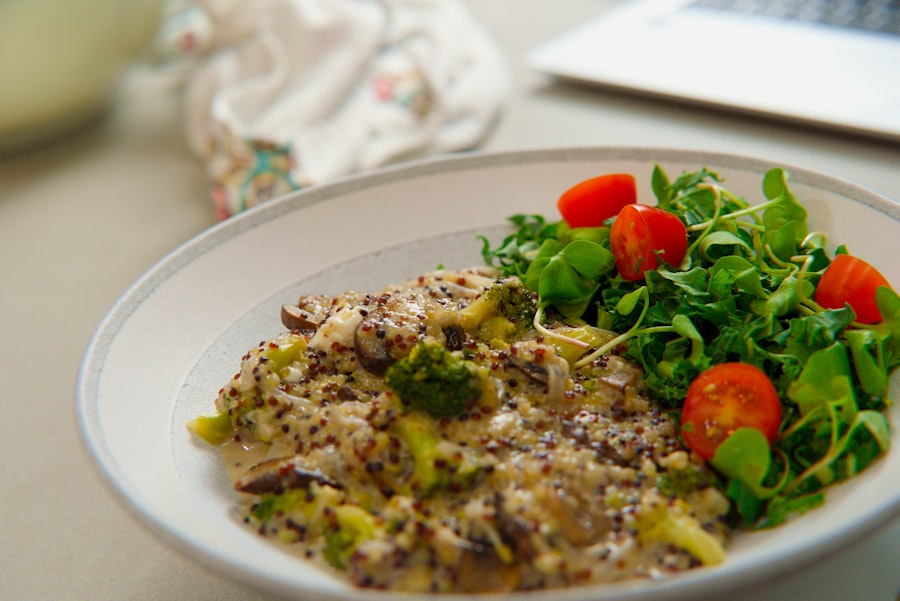As we step into 2025, the conversation around nutrition continues to evolve, with an increasing emphasis on health, sustainability, and affordability. Superfoods, often hailed for their dense nutritional profiles and health benefits, have become a focal point for those looking to enhance their diets without breaking the bank. The term “superfood” typically refers to foods that are exceptionally rich in nutrients and beneficial compounds, offering a plethora of health advantages.
In a world where dietary choices can be overwhelming, understanding which superfoods are both budget-friendly and nutrient-dense is essential for maintaining a healthy lifestyle. In this article, we will explore some of the top budget-friendly superfoods of 2025, highlighting their unique benefits and versatility in everyday meals. From ancient grains to vibrant vegetables, these superfoods not only provide essential nutrients but also fit seamlessly into a variety of culinary traditions.
By incorporating these affordable options into your diet, you can enjoy a wealth of health benefits while keeping your grocery bills manageable.
Benefits of Incorporating Superfoods into Your Diet
Incorporating superfoods into your diet can lead to a multitude of health benefits that extend beyond mere nutrition. These foods are often packed with antioxidants, vitamins, and minerals that can help combat chronic diseases, boost immunity, and promote overall well-being. For instance, many superfoods are rich in phytochemicals, which have been shown to reduce inflammation and lower the risk of conditions such as heart disease and diabetes.
By prioritizing these nutrient-dense options, individuals can make significant strides toward improving their health outcomes. Moreover, superfoods often come with added benefits that make them appealing for those on a budget. Many of these foods are not only affordable but also versatile, allowing for creative meal preparation that can cater to various dietary preferences.
For example, ingredients like quinoa and lentils can serve as the foundation for numerous dishes, from salads to soups, making them staples in any kitchen. The ability to create diverse meals from a limited selection of superfoods can help reduce food waste and encourage mindful eating practices.
Quinoa: The Versatile Superfood Staple

Quinoa has gained immense popularity over the past decade, and for good reason. This ancient grain is not only gluten-free but also boasts a complete protein profile, containing all nine essential amino acids that the body cannot produce on its own. This makes quinoa an excellent choice for vegetarians and vegans seeking to meet their protein needs without relying on animal products.
Additionally, quinoa is rich in fiber, magnesium, and B vitamins, contributing to its status as a superfood. One of the most appealing aspects of quinoa is its versatility in the kitchen. It can be used as a base for salads, incorporated into soups, or even served as a side dish in place of rice or pasta.
Its nutty flavor and fluffy texture make it an excellent canvas for various seasonings and ingredients. For instance, a simple quinoa salad with diced vegetables, olive oil, and lemon juice can be both refreshing and filling. Furthermore, quinoa can be prepared in bulk and stored in the refrigerator for several days, making it an ideal option for meal prep enthusiasts looking to save time and money.
Chia Seeds: The Nutrient-Packed Superfood Powerhouse
| Nutrient | Amount per 1 oz (28g) |
|---|---|
| Calories | 138 |
| Protein | 4.7g |
| Fiber | 9.8g |
| Fat | 8.6g |
| Omega-3 Fatty Acids | 4.9g |
| Calcium | 179mg |
| Iron | 2.2mg |
Chia seeds have emerged as a powerhouse of nutrition in recent years, celebrated for their impressive nutrient profile and health benefits. These tiny seeds are loaded with omega-3 fatty acids, fiber, protein, and various essential minerals such as calcium and magnesium. The high fiber content in chia seeds aids digestion and promotes feelings of fullness, making them an excellent addition to weight management strategies.
Moreover, the omega-3 fatty acids found in chia seeds are known to support heart health by reducing inflammation and lowering cholesterol levels. Incorporating chia seeds into your diet is remarkably easy due to their adaptability. They can be sprinkled on top of yogurt or oatmeal, blended into smoothies, or used as a thickening agent in recipes like puddings or jams.
One popular method is to create chia seed pudding by soaking the seeds in milk or a dairy-free alternative overnight; this results in a creamy dessert that can be flavored with fruits or sweeteners. Given their affordability and long shelf life, chia seeds are an excellent investment for anyone looking to enhance their diet with minimal financial strain.
Lentils: The Protein-Packed Superfood for Budget-Friendly Meals
Lentils are often overlooked in discussions about superfoods, yet they deserve recognition for their remarkable nutritional value and affordability. These legumes are an excellent source of plant-based protein, making them an ideal choice for those seeking to reduce meat consumption or adhere to vegetarian or vegan diets. In addition to protein, lentils are rich in fiber, iron, folate, and other essential nutrients that contribute to overall health.
The versatility of lentils is one of their most significant advantages. They can be used in a variety of dishes ranging from soups and stews to salads and veggie burgers. For example, a hearty lentil soup made with vegetables and spices can provide a comforting meal that is both nutritious and budget-friendly.
Additionally, lentils cook relatively quickly compared to other legumes; they typically require only 20-30 minutes of cooking time. This makes them an excellent option for busy weeknights when time is limited but healthy eating remains a priority.
Kale: The Nutrient-Dense Superfood for a Healthy Budget

Nutritional Powerhouse
Kale’s impressive nutritional profile makes it an excellent addition to a healthy diet. With its high levels of vitamins and minerals, kale provides a range of benefits that support overall well-being.
Culinary Versatility
In terms of culinary applications, kale is incredibly versatile. It can be enjoyed raw in salads or smoothies or cooked in various dishes such as stir-fries or soups. One popular preparation method is massaging kale leaves with olive oil and lemon juice to soften their texture before adding other salad ingredients; this technique enhances the flavor while making the leaves more palatable.
Accessibility and Affordability
Additionally, kale is often available at reasonable prices throughout the year, making it an accessible option for those looking to incorporate more greens into their diets without overspending.
Sweet Potatoes: The Affordable Superfood for Nutrient-Rich Meals
Sweet potatoes are another budget-friendly superfood that deserves attention for their impressive nutritional profile and culinary versatility. Rich in beta-carotene (a precursor to vitamin A), fiber, and various vitamins and minerals, sweet potatoes offer numerous health benefits including improved vision and enhanced immune function. Their natural sweetness makes them appealing to both children and adults alike.
The adaptability of sweet potatoes allows them to shine in various dishes across different cuisines. They can be roasted as a side dish, mashed for comfort food classics, or even blended into smoothies for added creaminess and nutrition. A simple recipe involves cubing sweet potatoes and roasting them with olive oil and spices until tender; this creates a delicious side that pairs well with almost any protein source.
Furthermore, sweet potatoes are often available at affordable prices year-round, making them an excellent staple for budget-conscious shoppers looking to maximize their nutrient intake.
Making Superfoods a Budget-Friendly Priority in 2025
As we navigate through 2025, the importance of incorporating budget-friendly superfoods into our diets cannot be overstated. With rising food costs and increasing awareness of health issues related to diet, choosing nutrient-dense foods that offer both affordability and versatility is essential for maintaining a balanced lifestyle. By focusing on superfoods like quinoa, chia seeds, lentils, kale, and sweet potatoes, individuals can create meals that are not only nourishing but also economically viable.
The journey toward healthier eating does not have to be expensive or complicated; rather, it can be achieved through mindful choices that prioritize both nutrition and budget considerations. Embracing these superfoods allows individuals to take control of their health while enjoying delicious meals that cater to diverse tastes and preferences. As we move forward into this new year, let us commit to making informed dietary choices that reflect our values of health, sustainability, and financial responsibility.
FAQs
What are superfoods?
Superfoods are nutrient-dense foods that are considered to be especially beneficial for health and well-being. They are typically high in vitamins, minerals, antioxidants, and other essential nutrients.
What makes a superfood budget-friendly?
A budget-friendly superfood is one that provides a high nutritional value for its cost. These foods are often readily available, versatile, and can be incorporated into a variety of dishes without breaking the bank.
What are some examples of budget-friendly superfoods?
Some examples of budget-friendly superfoods include beans, lentils, oats, sweet potatoes, eggs, canned fish (such as sardines or salmon), frozen fruits and vegetables, and nuts and seeds.
How can budget-friendly superfoods be incorporated into a diet?
Budget-friendly superfoods can be incorporated into a diet in a variety of ways, such as adding beans or lentils to soups and stews, using oats in breakfast dishes, roasting sweet potatoes as a side dish, and incorporating frozen fruits and vegetables into smoothies or stir-fries.
Are budget-friendly superfoods as nutritious as more expensive superfoods?
While some more expensive superfoods may have unique health benefits, budget-friendly superfoods can still provide a wide range of essential nutrients and health benefits. It’s important to focus on a variety of nutrient-dense foods rather than just a few specific superfoods.


















